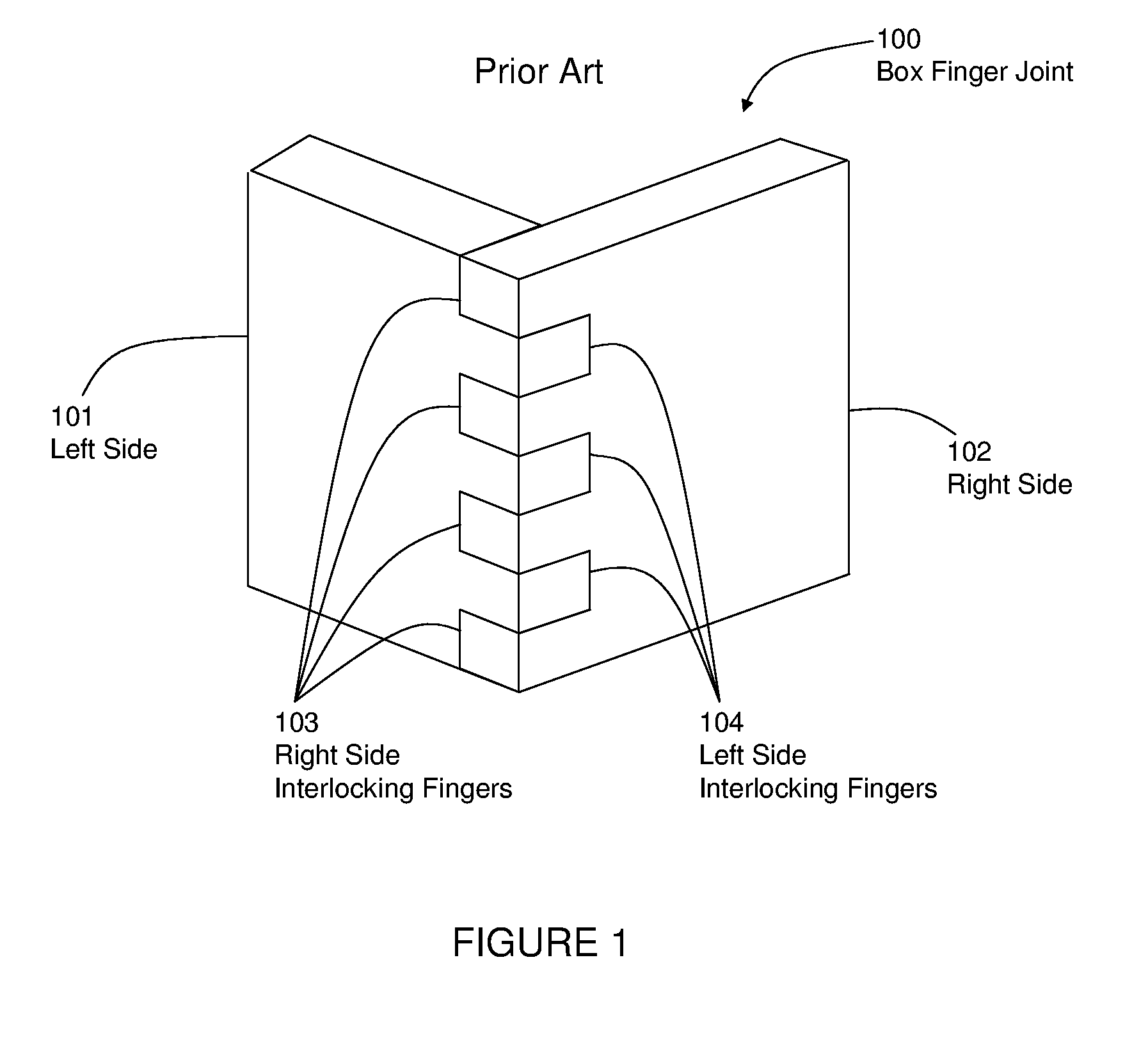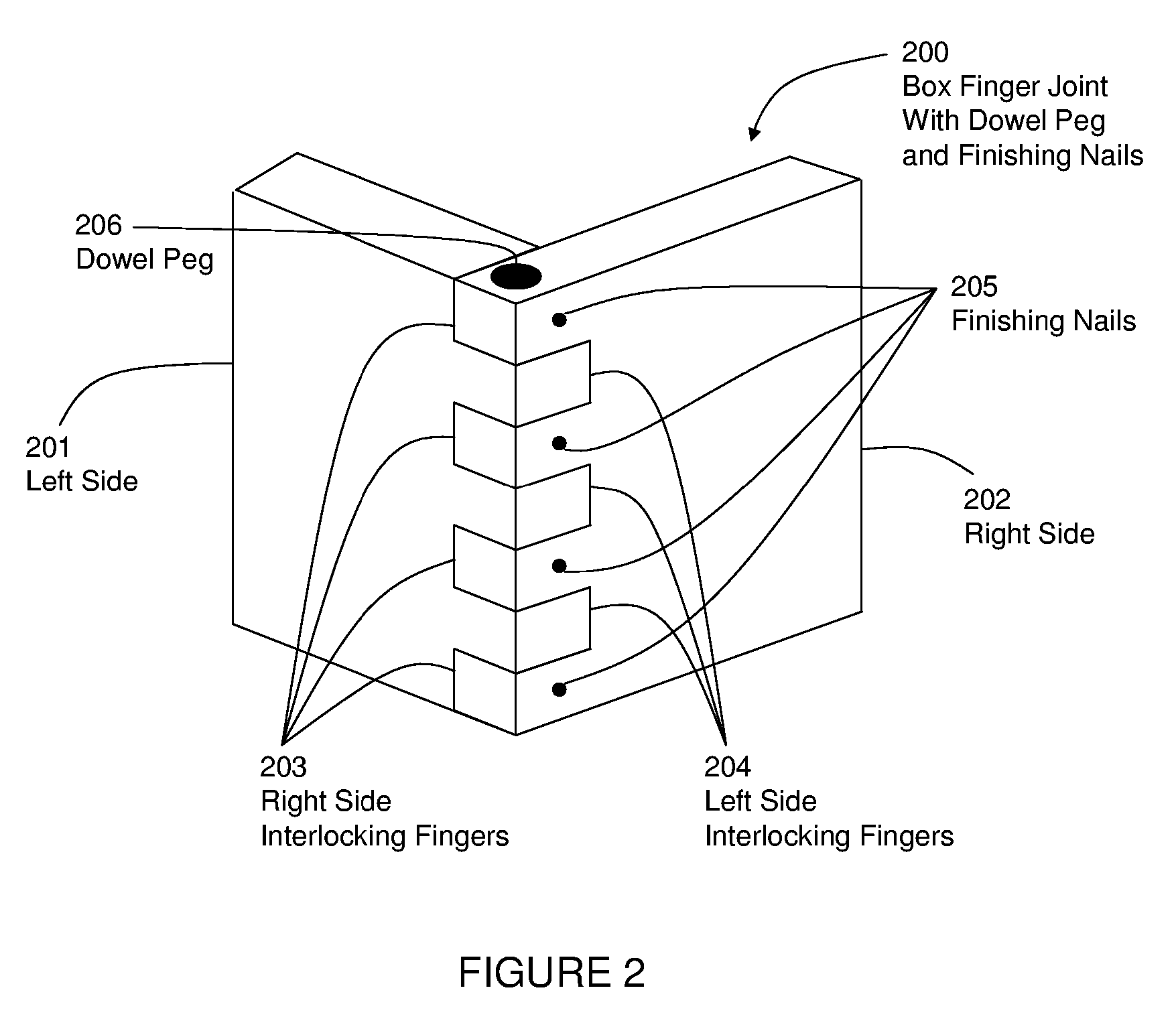Interlocking Corner Joint
a corner joint and interlocking technology, applied in the field of furniture manufacturing, can solve the problems of high price of drawer box joints with mechanical plates, easy failure of most high cost of drawer box joints without mechanical plates, so as to increase the gluing surface area and strength.
- Summary
- Abstract
- Description
- Claims
- Application Information
AI Technical Summary
Benefits of technology
Problems solved by technology
Method used
Image
Examples
embodiment 200
[0023]FIG. 2 illustrates an embodiment 200 of the present invention showing stronger box finger joint with dowel peg and finishing nails. The left side 201 of the box finger joint 200 is created by cutting or forming the alternating left side interlocking fingers 204. In a similar manner, the right side 202 of the box finger joint 200 is created by cutting or forming the alternating right side interlocking fingers 203. Subsequently the left side 201 and right side 202 are joined together and the interface between the right side interlocking fingers 203 and left side interlocking fingers 204, and are typically clamped in a clamping device. While still in the clamping device, a round hole is drilled at the top corner of 200. The pieces can now be removed from the clamping device. Glue is placed in the drilled hole and at the interface of the right and left side interlocking fingers 203 and 204 respectively. The pieces are clamped in a clamping device and subsequently a dowel peg 206 i...
embodiment 300
[0024]FIG. 3 is an illustration of an embodiment 300 of a left side cross section of the corner of the box finger joint with dowel peg and finishing nails 200 in FIG. 2. The left side 301 is aligned so that the left side interlocking fingers 304 are perpendicular to the right side interlocking fingers 303. The hole is drilled at the corner of 300 through the left and right side interlocking fingers 304 and 303 respectively. The location of the dowel peg 306 inserted into the hole and through 303 and 304 is shown. The finishing nails 305 may be driven into the right side interlocking fingers 303 and through the dowel peg 306 and into the left side 301.
embodiment 400
[0025]FIG. 4 is an illustration of an embodiment 400 of a right side cross section of the corner of the box finger joint with dowel peg and finishing nails 200 in FIG. 2. The right side 402 is aligned so that the right side interlocking fingers 403 are perpendicular to the left side interlocking fingers 404. The hole is drilled at the corner of 400 through the right and left side interlocking fingers 403 and 404 respectively. The location of the dowel peg 406 inserted into the hole and through 403 and 404 is shown. The finishing nails 405 may be driven into the right side interlocking fingers 403 and through the dowel peg 406 and into the left side.
PUM
 Login to View More
Login to View More Abstract
Description
Claims
Application Information
 Login to View More
Login to View More - R&D
- Intellectual Property
- Life Sciences
- Materials
- Tech Scout
- Unparalleled Data Quality
- Higher Quality Content
- 60% Fewer Hallucinations
Browse by: Latest US Patents, China's latest patents, Technical Efficacy Thesaurus, Application Domain, Technology Topic, Popular Technical Reports.
© 2025 PatSnap. All rights reserved.Legal|Privacy policy|Modern Slavery Act Transparency Statement|Sitemap|About US| Contact US: help@patsnap.com



